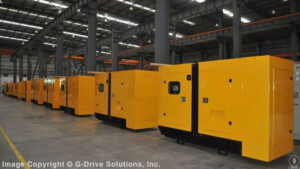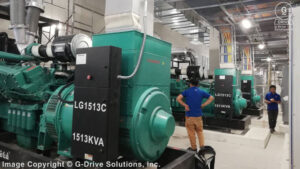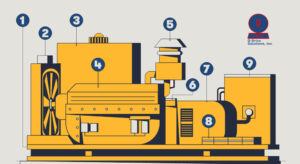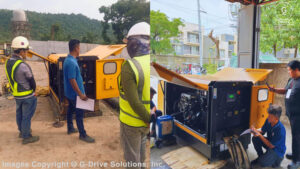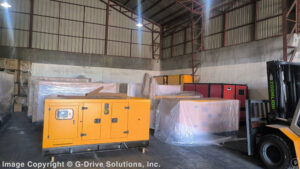Generators are powerful pieces of industrial equipment that provide electricity when access to the main power grid is unavailable. They act as backup power sources for homes, businesses, and worksites, keeping essential systems running during blackouts or emergencies. But have you ever wondered how generators actually work?
In simple terms, a generator converts mechanical energy into electrical energy. This is done through a combination of an engine, alternator, and fuel system. The science behind this process is electromagnetic induction – a principle discovered by Michael Faraday, which states that electricity can be generated when a conductor moves within a magnetic field.
Understanding how a generator works can help you choose the right type for your needs, perform routine maintenance, and troubleshoot issues when they arise. Below, we’ll break down the core components of a generator and explain how they work together to generate electricity.
Main Components of a Generator
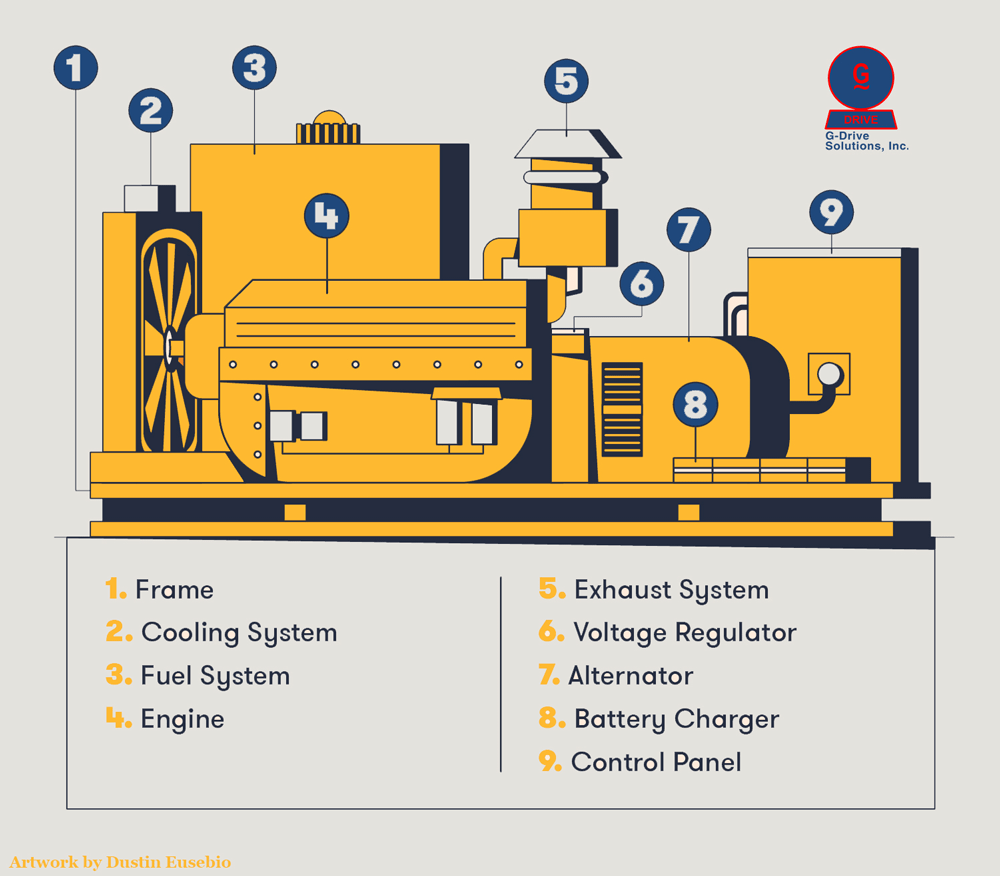
Although generator sizes and applications vary, most modern diesel electric generators share the same key components:
Frame
The frame houses and supports all internal components. It also serves as a protective structure and makes handling and transportation safer.
Engine
The engine supplies the mechanical energy needed for power generation. The size of the engine directly affects the generator’s power output. Engines can run on gasoline, diesel, propane, or natural gas.
Alternator
This is the part responsible for producing electricity. It contains a stator (stationary part) and a rotor (rotating part) that work together to generate an alternating current (AC).
Fuel System
Generators require a fuel source—typically stored in an attached or external tank. Fuel types include diesel, gasoline, propane, or natural gas, and the system includes supply and return lines.
Exhaust System
Fuel combustion creates toxic exhaust gases. The exhaust system safely routes these emissions through metal piping—often steel or iron—to keep users and the environment safe.
Voltage Regulator
This component controls the output voltage of the generator. It ensures a consistent flow of electricity by converting AC current to the correct voltage level and stabilizing it during operation.
Battery Charger
A generator’s battery is essential for starting the engine. The built-in charger keeps the battery topped up by supplying a steady float voltage.
Control Panel
Located externally for easy access, the control panel includes switches, gauges, and indicators. Features vary by model but typically include start/stop controls, voltage settings, and engine metrics.
What Is an Electric Generator Used For?
Electric generators are made for both personal and commercial use. They are most commonly used as a backup power source in the case of a brownout or power outage, but they can also function as a primary power source for buildings or construction sites off the power grid.
Generators come in various sizes and power bands, but are usually often found in silent-type, open-type, or mobile/trailer configurations. Generators are also often connected to transfer switches (either automatic or manual) to ensure seamless power transfer when the grid goes down. For more information about the differences, click here.
How Do Generators Create Electricity? A Step-by-Step Overview
Generators don’t actually “create” electricity from scratch, they transform mechanical energy into electrical energy through a series of steps:
Step 1: Fuel Combustion:
The engine burns fuel (e.g., diesel, gasoline, propane, or natural gas) to generate mechanical energy.
Step 2: Energy Transfer to Alternator:
The engine drives the alternator, causing it to push electric charges through the generator’s wiring.
Step 3: Magnetic Field Generation:
As the rotor spins, it creates a moving magnetic field around the stator’s stationary conductors.
Step 4: Current Conversion:
This motion induces an electrical current, which the alternator converts into alternating current (AC) voltage.
Step 5: Power Delivery:
The resulting electrical current is then delivered to appliances, tools, or an entire building’s power system.
Conclusion
Generators play a crucial role in delivering power wherever and whenever it’s needed—whether you’re dealing with an emergency outage or working in a location far from the electrical grid. By understanding how generators work and what their components do, you can make smarter decisions when buying, using, or maintaining your unit.
Seeking a generator for your business? Or do you already own a generator but are looking for world-class and true 24/7 servicing? Contact G-Drive Solutions Inc., one of the leading generator companies in the Philippines and the only one that provides true 24/7 aftersales care in the country.
Article by Anthony Betia, MScM


